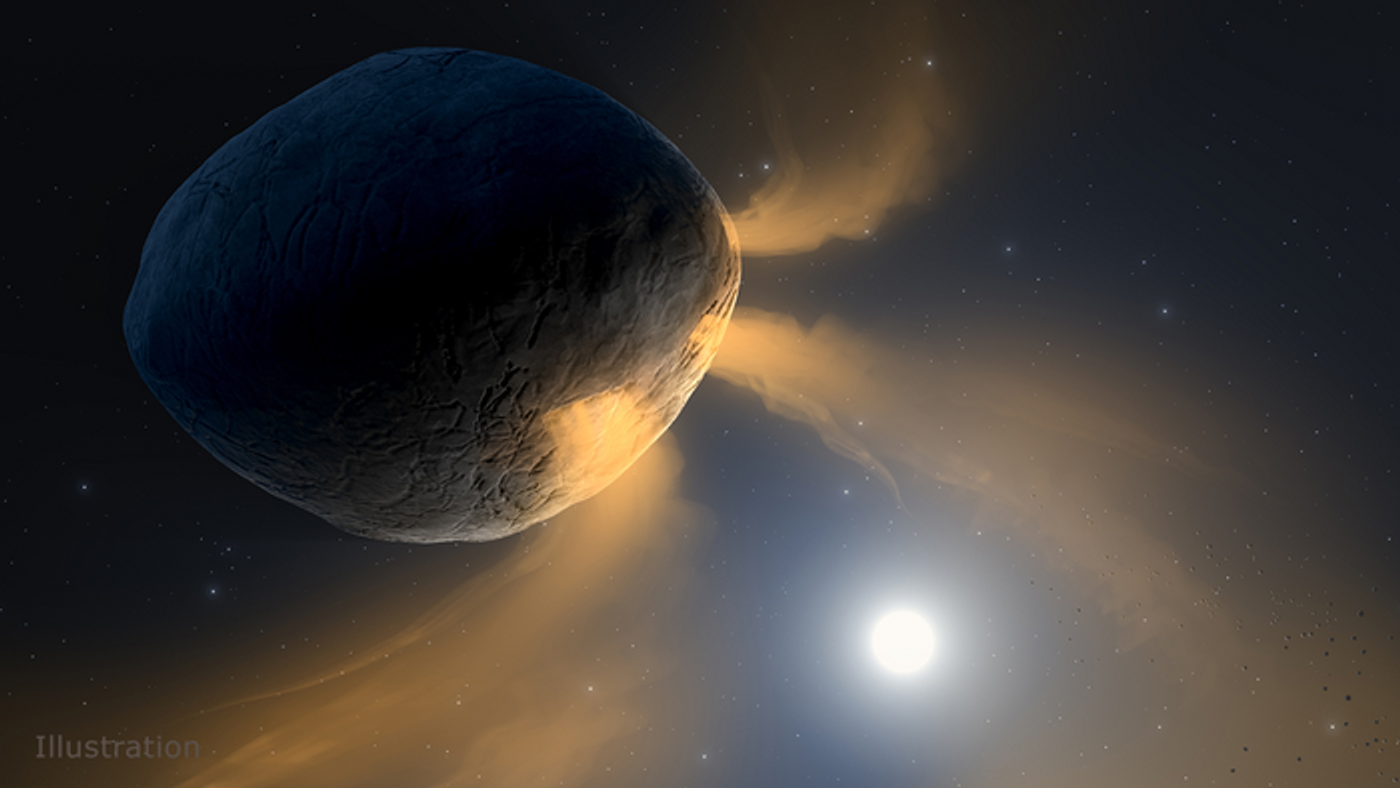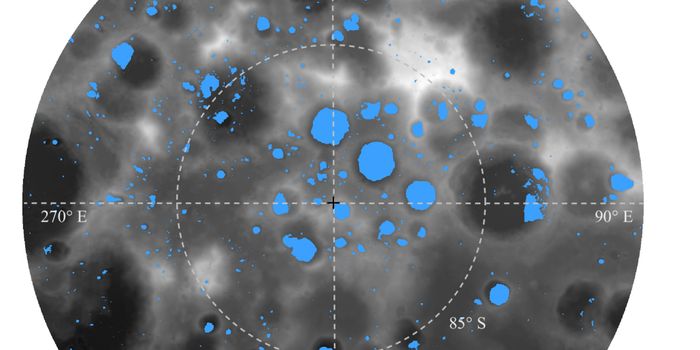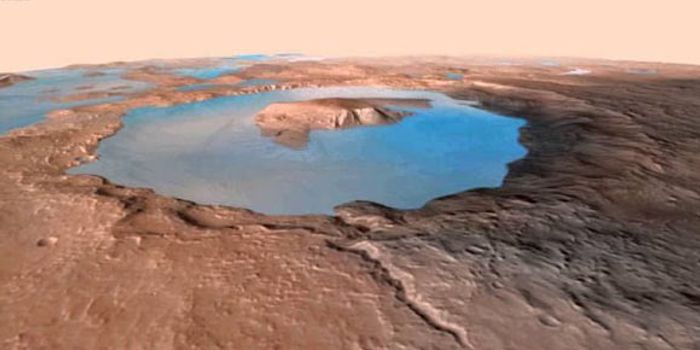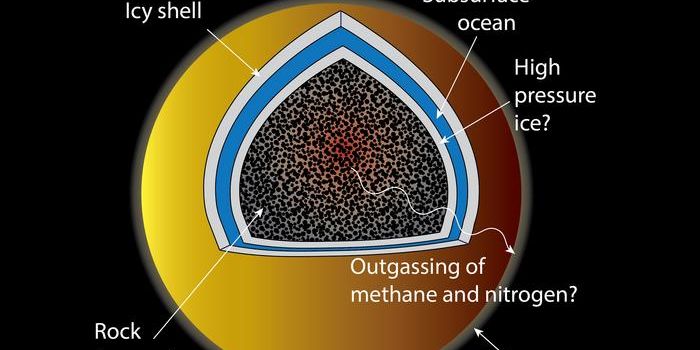Asteroid's Tail Observed to be Made of Sodium Gas, Not Dust
While the planets and moons of our solar system garner frequent attention from the scientific community, asteroids and comets also get spotlight from time to time. Not just because their compositions comprise pieces of the early formation of our solar system, but they also serve as intriguing visual phenomenon, as well. This especially true with comets, as their bright tails that create incredible spectacles are the result of their icy components evaporating as they get travel close to our Sun. In contrast, asteroids are quite dull as they are largely comprised of rock and dust.
Artist illustration of asteroid 3200 Phaethon and it's comet-like tail. The surface of Phaethon heats up so much that sodium within Phaethon’s rocky structure possibly vaporizes and vents into space, produing its comet-like tail. (Credit: NASA/JPL-Caltech/IPAC)
However, one such asteroid, 3200 Phaethon, has had the attention of the scientific community for a while due to its uncharacteristic, comet-like tail it emanates when the asteroid gets close to the Sun. The longstanding hypothesis for this behavior was escaping dust from the asteroid, but a recent study published in the Planetary Science Journal uses data from two solar observatories to suggest that sodium gas is the culprit for Phaethon’s unique feature.
“Our analysis shows that Phaethon’s comet-like activity cannot be explained by any kind of dust,” said Qicheng Zhang, who is a PhD student at the California Institute of Technology, and lead author of the study.
Scientists have known about Phaethon being the source of the annual Geminid meteor shower since 1983, but it wasn’t until 2009 that astronomers first observed the asteroid’s unique tail structure as it traverses near our Sun during its 524-day orbit. The asteroid was once again observed in 2018 and scientists found its tail contained far more material than Phaethon could discharge during its close solar approaches.
For this latest study, the researchers observed Phaethon during another close approach to the Sun in 2022, finding sodium instead of dust by using the color filters onboard the Solar and Heliospheric Observatory (SOHO). This, along with the tail’s shape matching behavior if it contained sodium, helped confirm that as the culprit for Phaethon’s tail structure and composition.
“Not only do we have a really cool result that kind of upends 14 years of thinking about a well-scrutinized object,” said Dr. Karl Battams, who is an astrophysicist and computer scientists at the Naval Research Laboratory, and a co-author on the study, “But we also did this using data from two heliophysics spacecraft – SOHO and STEREO – that were not at all intended to study phenomena like this.”
The researchers note the study’s findings now bring into question if currently designated comets are comets at all and not asteroids like Phaethon.
One looming conundrum regards how Phaethon supplies the material for the annual Geminid meteor shower if the asteroid doesn’t discharge that much dust to begin with. The researchers suggest a possible event thousands of years ago where a chunk of Phaethon broke off resulting in the annual Geminid meteor shower we see today. However, this hypothesis is still being speculated.
Going forward, the team plans to use the Japanese Aerospace Exploration Agency’s DESTINY+ mission to examine Phaethon up close, to include its surface and dust that might exist in the surrounding region of the mysterious asteroid.
What new discoveries will scientists make about Phaethon in the coming years and decades, and how is it supplying the annual Geminid meteor shower? Only time will tell, and this is why we science!
Sources: Planetary Science Journal, NASA
As always, keep doing science & keep looking up!









